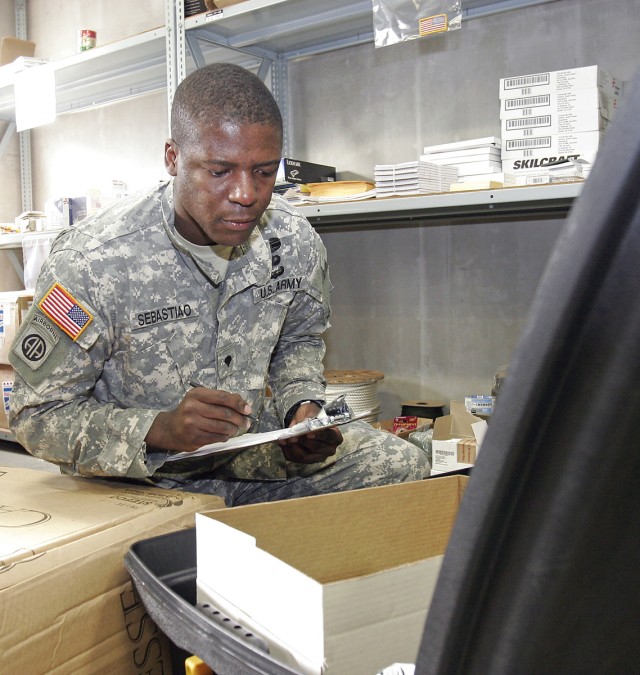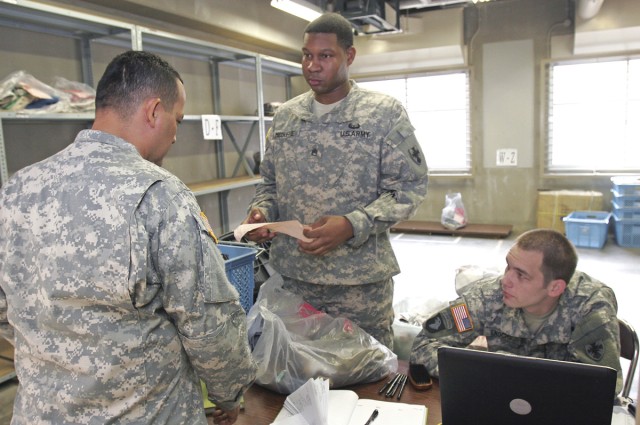CAMP ASAKA, JAPAN - Long before people began arriving for Yama Sakura 55, Soldiers of Task Force 35 established a foothold here and had things ready for U.S. servicemembers participating in this year's exercise.
Task Force 35, stationed at Sagami Depot, 10 kilometers north of Camp Zama, is part of the Army's 8th Theater Support Command. Its Soldiers are among the more than 1,000 American Soldiers, Sailors, Marines and Airmen participating in Yama Sakura 55, along with their counterparts from the Japanese ground, air and maritime services. Yama Sakura is a bilateral U.S.-Japan, computerized command post exercise designed to better the defense of Japan, and to protect each country's interests throughout East Asia.
"In a nutshell, we cover the breadth and the width of logistical support for operations such as this," said Maj. Dan Reichard, supply operations officer for the 35th. "That's everything from meeting people at Narita Airport, to inprocessing them here, to housing and feeding them, to outprocessing them and getting them home again."
And it doesn't end there. Throw in laundry and postal service, medical and chaplains service, post exchange service and Morale-Welfare-Recreation activities, and, "you've got everything under the sun to keep the servicemember motivated and able to do his job," Reichard said.
Yama Sakura isn't the only exercise for which TF 35 does all this. There's also operations North Wind, Orient Shield and Pacific Reach, just to name a few. Taking that into consideration, one might think that the unit has the logistics support mission down pat.
Yet it just isn't as easy as it might seem, Reichard said. There are any number of issues that have to be factored in each time the task force takes on a mission.
"I mean, you've got to consider the fact that people are being pulled in from all the service branches - not just from around U.S. Army Japan, but from across the continental U.S., Hawaii, and Alaska," he explained. "Add to that, the reality that the success of what we do for the exercise participants greatly depends on our bilateral coordination with the host nation."
It may be our people living in the barracks, eating in the dining facility and participating in those MWR activities, but the structures in which those things happen belong to the host nation, Reichard explained. Coordinated properly, things get done and people stay motivated and focused on their tasks. Done improperly, no one is happy, no is focused on their mission and success of the operation can be in serious question.
"That's why we put such great effort into working well with our Japanese counterparts," Staff Sgt. Jason Quigley said. An intelligence analyst who hails from Laurel, Md., Quigley tracks security and force protection issues for the task force.
In his mind, the problems may be big, but the solution, one that Task Force 35 puts into practice every time it deals with the Japanese in support of the various exercises, is simple.
"We're all one team, American and Japanese, and we know we've got a job to do," he said. "Neither of us can do it without the support of the other, and we know that in order to continue the success of our partnership we must work together as closely as possible whenever possible."
Bringing together the people and the support necessary for making Yama Sakura a success is by no means easy, and often difficult at best. The Soldiers of Task Force 35, though, continue to work their magic and make this exercise and every other they're involved with a logistical success.






Social Sharing